Want to know what children can do by two years? What do they already understand, how many words say they know how to do? In this article you will find answers to your questions, and also learn what exercises to develop your baby's speech need to do.
Contents
- Child development indicators in 1 year
- Physical development of the child in 1 year
- Emotional development of the child
- Socio-psychological development of the child in 1 year
- Mental development of the child in 1 year
- Development of the speech in the child 1 year
- Mental and psychological development of the child in1 year
- ( adsbygoogle = window.adsbygoogle || []). Push({ });Child development norms after years to months
- Child development in 1,1 - 1,3 years
- Table of growth and weight and head circumference of a child in 1.3 years according to WHO
- Cognitive development of a child in 1.3 years
- Socio-emotional developmentchild in 1.3 years
- Child's everyday skills in 1.3 years
- Child development in 1.4 - 1.6 years
- Table of growth and weight and head circumference of the child in 1.6 years according to WHO
- Cognitive development of the child in 1, 6 years
- Socially-emotional development of a child in 1,6 years
- Bytovn Child's skills in 1.6 years
- Child development in 1.7 to 1.9 years
- Growth and weight table and head circumference of the child in 1.9 years according to WHO
- Cognitive development of the child in 1.9 years
- Socially-emotionalchild development in 1.9 years
- Child's everyday skills in 1.9 years
- Child development in 1.10 - 2 years
- Table of growth and weight and head circumference of the child in 2 years according to WHO
- Cognitive development of the child in 2 years
- Socially-Emotional development of the child in 2 years
- Child's household skills in 2 years
- and speech development of the child from the year
- Features of speech development of a child
- Stages of speech development in children
- 10 exercises for the development of a child's speech
- VIDEO: Finger exercises for children 1 - 3 years. Developing games at home
It's already turned a whole year to your baby. How could you not believe it, but your baby is already so big! He already knows how to sit, stand, take his first steps and greedily learn this wonderful world around him. And what will happen next? Do not rush events and parents need to be patient.
Soon the baby will say his first word and run. All children are different, someone starts walking earlier, and someone is chatting. Parents need to remember that to compare the skills of your child and neighbor or friend on the court is not necessary, the child himself knows best when his time comes to surprise you.
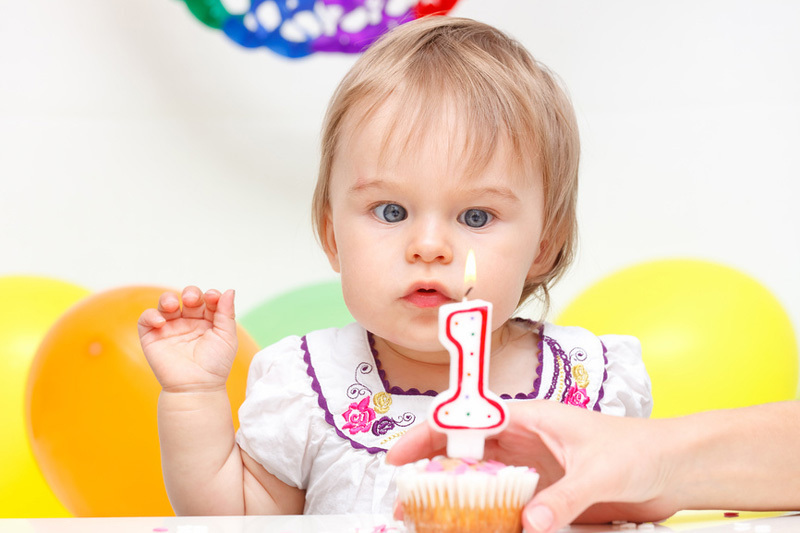
Child development indicators in 1 year
All children are individual, but there are some development norms, and if you notice any strong deviations from them in your child, you should contact your pediatrician.
Physical development of a child in 1 year
What can a child do at this age?
- confidently sits and knows how to sit down
- crawls well and studies the territory
- tries to climb the bed
- if it falls, can get up on its own feet
- walks, holding handles for something, some already go by themselves
- tries to eat by itself and knows how to hold a spoon
- makes attempts to dress alone
- opens cabinets and tables, regularly places orders in them and checks the contents
- likes to play with the ball and knows how to push it with the foot

Emotional development of the child
The child becomesmore emotional, but control their emotions pipsqueak still can not. However, he already knows when it's time to rejoice, and when you can get hurt.
Thinking about something concrete, the child already clearly represents this image, his thinking becomes abstract at this age. In 1 year the kid already knows how to play: feed the toy, fold the rings of the pyramid. And also if you ask for something simple, he can do it.
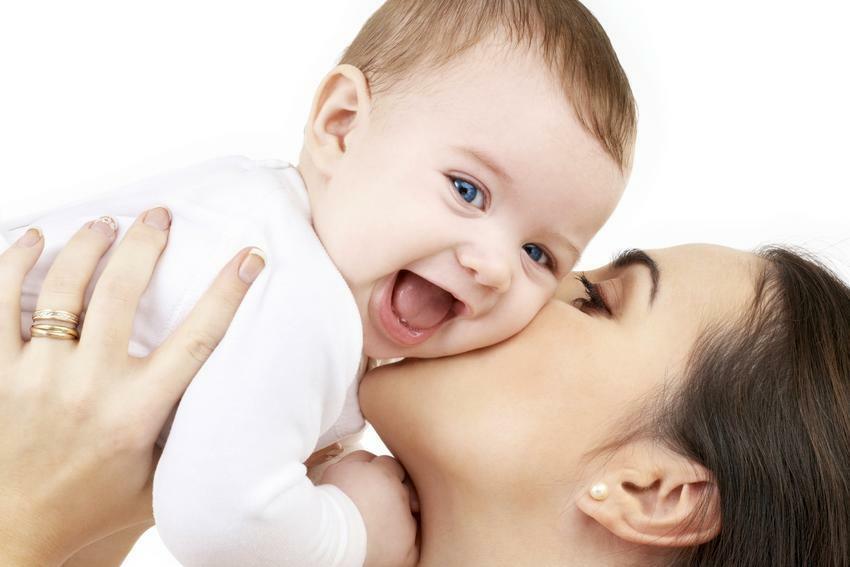
Socio-psychological development of the child in 1 year
- For children at one-year age, mom is everything, so the baby reacts strongly to separation from the mother, even for a short while. This is very easy to explain, because all the previous year he was only with his mother, so the child feels safety only with her
- . Since the year the kid begins to communicate actively with others, so his family and friends need to monitor what they do and how they do and say, because the child will copy them all
- In 1 year, the kids already clearly share people on their own and others', they already have someone who can like, but someone they will not allow to themselves. With joy they go to hug and kiss with their loved ones if to ask, but with strangers behave cautiously
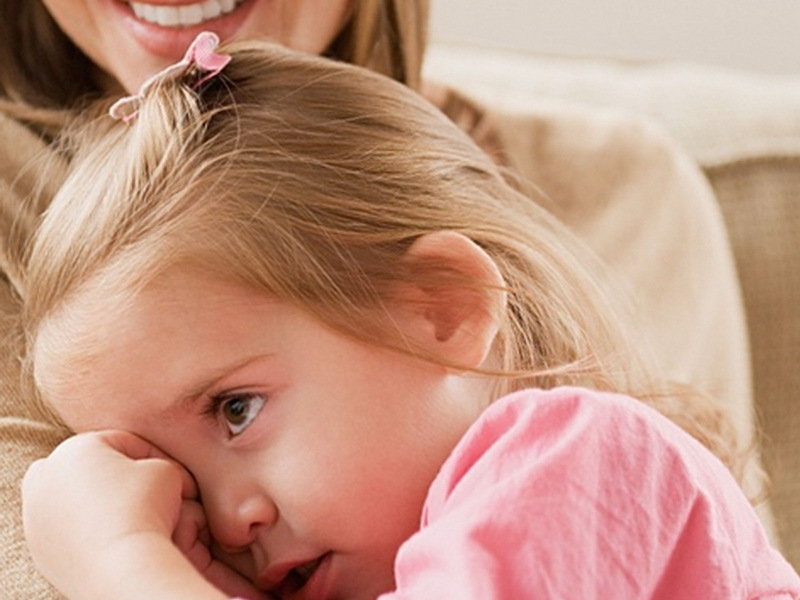
The psychic at this age is not yet fully formed, so you need to look after the behavior of the child, he can not cry much now, tk.if he is upset all the time, it can lead to psychological disorders.
Also at this age children already know what "is impossible".Therefore, the task of parents to define clear boundaries, which can not be violated and always remind the child about it.
Mental development of the child in 1 year
Mental development occurs at the level of sensation of the surrounding world. Children learn everything around in movement or with the help of the senses - this development is called sensorimotor. A year-old kid tries to imitate adults, he knows the basic emotions and is able to show them. Also children at this age are able to unconsciously manipulate adults, and with the help of screaming they achieve their desires. 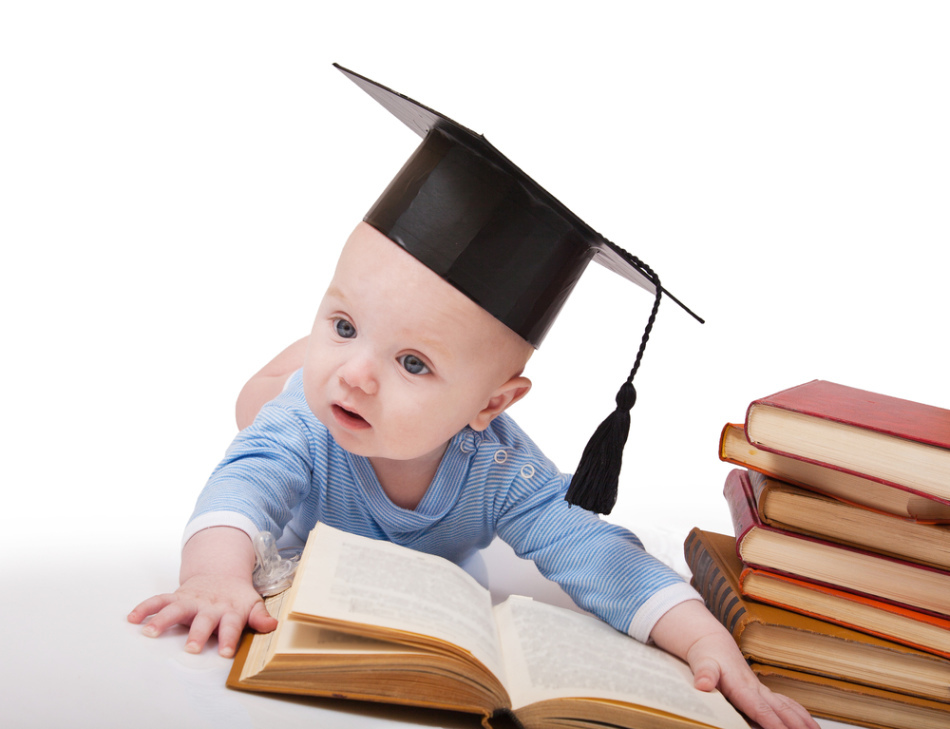
Speech development in a child 1 year
By the year 1, many children speak about 10 words, but most often they speak their own, unknown adult language. Such a speech is called autonomous - the child shows what he wants, with the help of gestures or emotions.
For a child to start talking faster, parents need to say everything they do. Also, the development of speech is affected by small motor skills, so you need to deal with the child.

If you help your kid, support him, develop it, he will grow, develop and delight you with his skill.
Mental and psychological development of the child in 1 year
Mental health of the child is laid from a very early age, one can say from the cradle, and this depends on how he will manifest and behave in the future. Parents play a huge role in the development of the psyche of their baby, so they should know all the features and forms of mental development. More on this you can find in the article What influences the mental development of the child? Norms of child's mental development
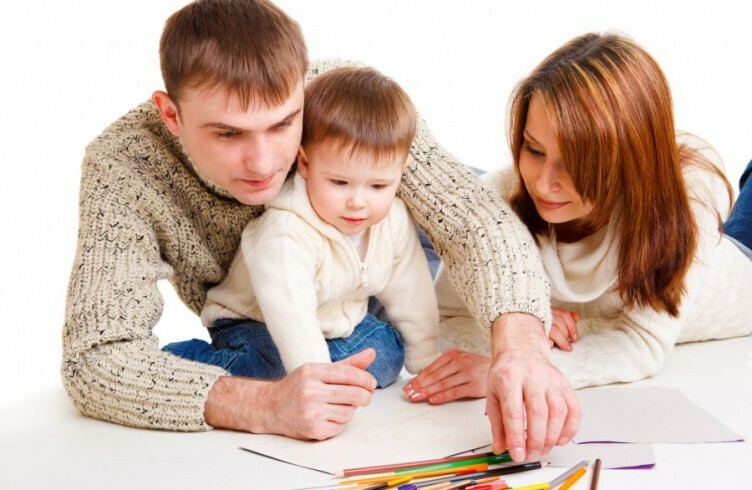 Child development norms after a year by months
Child development norms after a year by months
All the norms of children's development are provided for reference only, this means that your child is not required to perform the actions described below at a certain age.
Do not forget that the child is a small person, who has her own personality and she does not owe anything to anyone. Your task as parents, to direct your child in the right direction, push him to action, show him this wonderful world and teach him to live in it.
Child development in 1,1 - 1,3 years
At this age the child is able to:
- stand, do slopes, squat and get up from them, walk backwards
- walk independently, but often falls
- to climb on low stairs attachedstep
- to do various manipulations with the hands: lift them up, forward, hide behind the back
- move fingers and rotate the hands
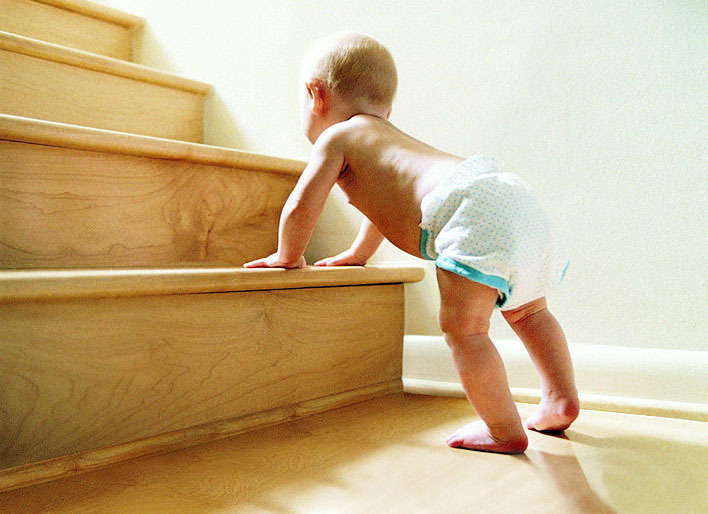 Table of growth and weight and head circumference of the child in 1.3 years according to WHO
Table of growth and weight and head circumference of the child in 1.3 years according to WHO
| Parameters | Child | From | To |
| Weight, kg | Boy | 8.3 | 12.8 |
| Girl | 7.6 | 12.4 | |
| Height, cm | Boy | 74.1 | 84.2 |
| girl | 772 | 83 | |
| Head circumference, cm | boy | 44.2 | 49.4 |
| girl | 42,9 | 48,4 |
Cognitive development of a child in 1.3 years
- Children at this age are able to distinguish between two forms of objects. For example, they distinguish cubes from balls if they first show it
- Distinguishes one or two colors and can choose different toys of the same color
- Collects and disassembles the pyramid
- Puts cubes one on the other
- Draws with a pencil or felt-tip pen
- Can do some action with a toy, if it is shown, for example, feeds the bunny
- Does the shown or sounded action with another toy, for example, feeds both the bunny and the seal
- All repeats over the adults
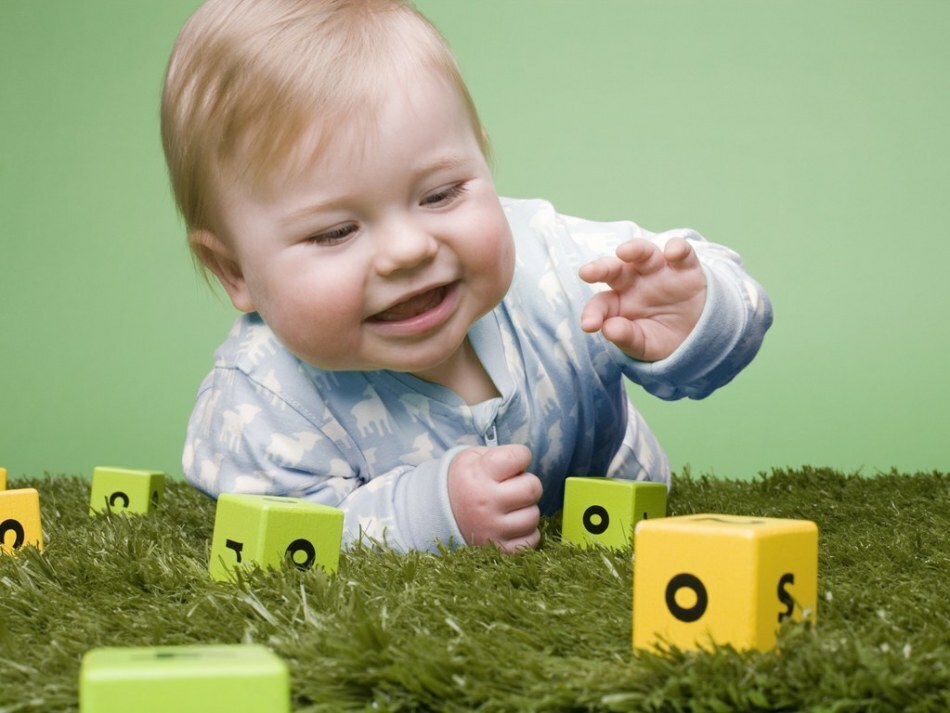
Socio-emotional development of the child in 1.3 goyes
- the whole day the child is able to spend in a balanced state
- looks in the eyes of an adult if the situation is new for the child or he does not know how to proceed further
- copies the facial expressions of the adult: laughs or frowns
- reacts to their games by facial expressions and soundtrack
- repeats the feelingsanother child - laughs with him or cries
- shows a different behavior when his or a stranger
- appears often changes his emotional state - from laughing to crying for a few seconds
- Distracted and switches its attention
- knows the world through its feelings - you first need to touch the cup with tea to understand that it is hot
- its speech is accompanied by facial expressions, the tone change
- on the eyes can distinguish what the kid wants or feels - asks, rejoices, asks, is interested in
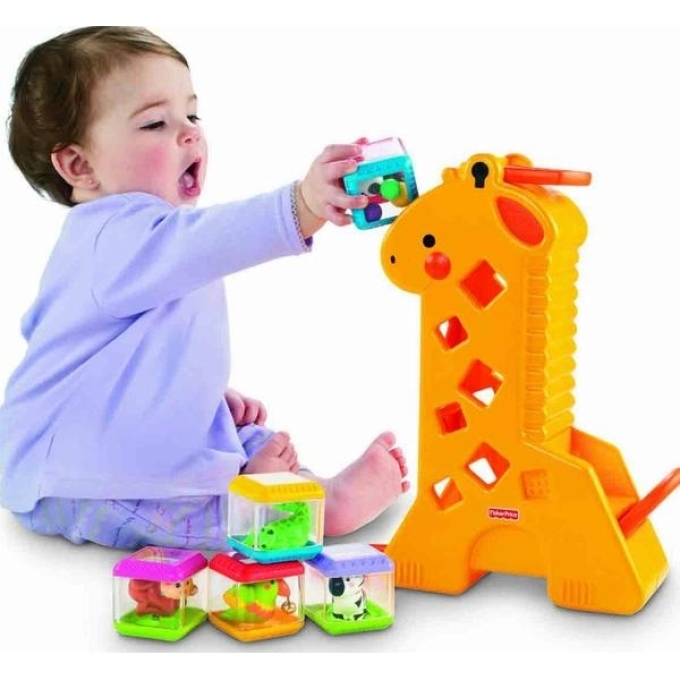
- knows how to attract the attention of an adult, for this can use both crying and peering into the eyes
- freely and calmly feels with their own and is tense in a society with strangers
- emotiono depends on the presence of the mother, if she leaves, the child cries and is sad for a while
- is afraid of the new
- is able to express discontent if it is not comfortable, do not give the desired, restrict the freedom of action
- is interested in what other children play
- draws attention to new toys
- if something does not work out, starts to get nervous, and if it turns out - rejoices
- likes to play with adults
- distinguishes between rhythmic and quiet music,
responds to it in different ways
- 's everyday child skillsknows how to drink from a cup
- can hold a spoon, type a little thick food into it, carry it into his mouth and eat
- tries to wipe his hands after he has washed
- sometimes asks to do his business on a pot
Child development in 1,4 - 1,6year
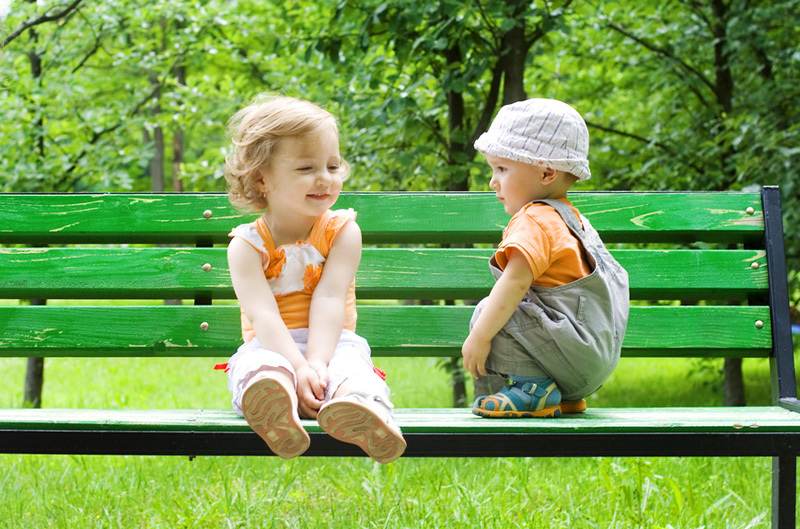 At this age the child is able to:
At this age the child is able to:
- itself walks well and straight, and in a circle, and bypassing the objects interfering with it
- steps over the noise on the floor
- can walk on a board that is slightly tilted
- rises and descends on low steps, alternating legs
- himself sits on lapoint each or chair
- throws the ball in all directions
Table of height and weight and head circumference of the child in 1.6 years according to WHO
| Parameters | Child gender | From | to |
| Weight, kg | boy | 8.8 | 13.7 |
| girl | 8 | 13.2 | |
| Height, cm | boy | 77 | 87,7 |
| girl | 75 | 86,5 | |
| Head circumference, cm | boy | 44.7 | 50 |
| girl | 43,5 | 49 |
Cognitive development of a child in 1.6 years
- Knows two shapes and shows if you ask for
- Shows itemsthe same shape
- Knows two values - large and small
- SobiRaises a pyramid from a large and small ring, if before it show
- Knows two or three colors, if you ask or show it, gives the toy the color you want
- Draws with a pencil or felt-tip pen, can do zigzags, draw ovals, strokes
- Likes to roll a wheelchair, machine
- books, flipping through pages
- Knows how to roll a toy, holding it by a rope
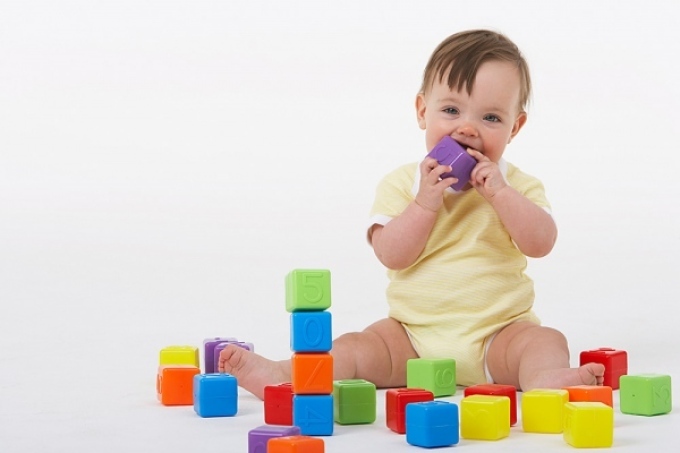
- Does one or two actions that often sees, for example, feeds a toy, combs hair.
- Differentiates objects according to their purpose and, accordingly, plays them, onExample, rolls a machine, throws a ball
- Repeats a few actions that other children do
- Is smart, for example, if you need something to get high, puts something up that you can stand up for and reach out
Socially-emotional development of a child in 1,6year
- the whole day the child is able to hold in a relaxed state
- begins to show gestures and facial expressions important for social development, for example, is able to regret, but rarely on its own initiative, usually at the request of
- copies the tone of the speech of an adult
- copies the behavior of an adult in a particular situation
- is simply distracted by
- if the mode or conditions are violated, the child shows discontent and cries
- closely watches what other children do
- does not give away their toys to other children or takes their toys
- draws the attention of an adult pulls the attention of an adultby the hand, shouts, facial expressions, sometimes cries
- likes to communicate with adults and closely watches what they do
- does not like to part with her mother, cries and misses
- likes to play aloneaT, rejoices if something turns out, gets angry if it does not work and stops doing it
- perceives different music in different ways and reacts to it
- loves to dance and do the learned movements when the music is playing
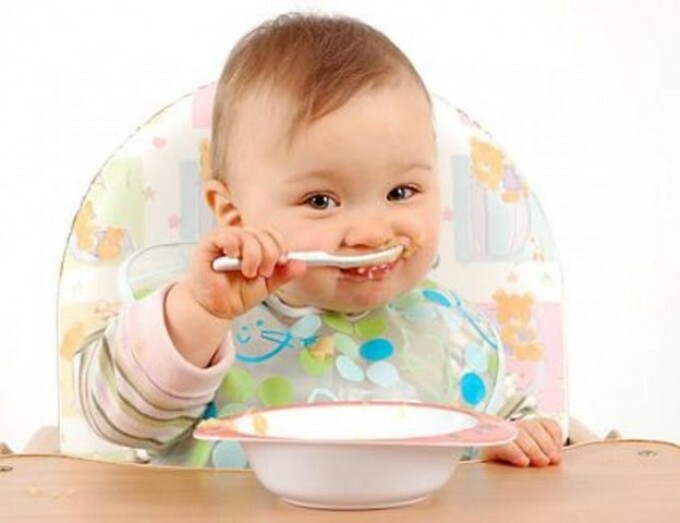
The child's everyday skills in 1.6 years
- knows how to drink carefully from a cup
- tries to eat on its own, but often sheds or spills food
- tries to eat liquid food
- does not wash up with a fuss
- reports about its needs
- does not like it if
gets dirty Child development in 1,7 - 1,9 years old
At this age the child can:
- walk on a bench or other board that is some distance from the floor
- step over the obstacles on the ground
- hit the ball in the bucket on the floor
- run around
- on the bed,chairs, self-descending
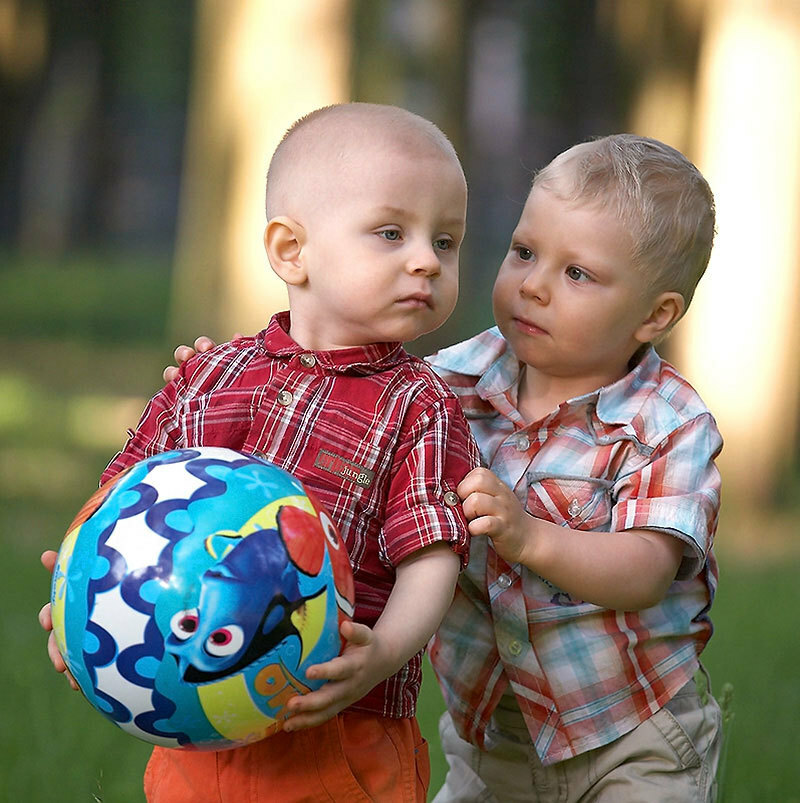
Table of growth and weight and head circumference of a child in 1.9 years according to WHO
| Parameters | Child | From | Up |
| Weight, kg | Boy | 9.2 | 14,5 |
| girl | 8,5 | 14 | |
| Height, cm | boy | 79.5 | 91 |
| girl | 77,5 | 90 | |
| Head circumference, cm | boy | 45,2 | 50,5 |
| girl | 44 | 49,5 |
Cognitive development of a child in 1.9 years
- Distinguishes four different shapes of surrounding objects
- Selects the object of the desired shape for the hole
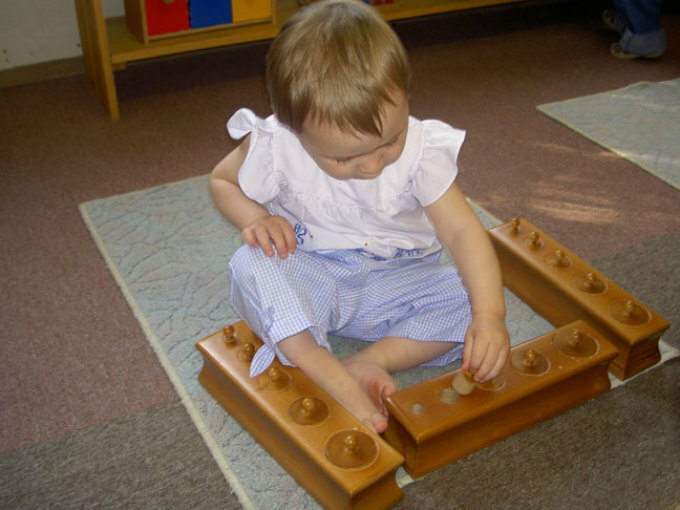
- Knows three values and shows the required
- Displays the largestand the smallest object ofhow many, different sizes
- Collects a pyramid consisting of three different sizes of rings
- Knows up to four colors, finds the desired color toy
- Can explain what draws
- Folds a sheet of paper
- Carrying out actions in life in the game, for example, feeds, lulls, rolls onstroller toy
- Builds small cubes and other simple objects from cubes, does this after the adult shows
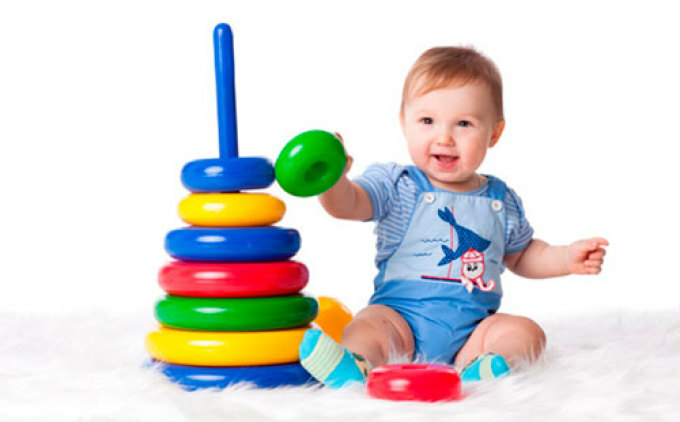
Socio-emotional development of the child in 1.9 years
- behaves calmly, steadily
- moodmostly good, is interested in everything that happens
- copies the behavior of adults
- understands intonations in the adult's voice
- accompanies his speech with exclamations, mimicry
- misses if mum leaves
- is most interested in adults who play
- if in an unfamiliar environment,
- strainscommunicates with other children by their own methods
- when played, adds soundtrack
- likes to conduct various actions with toys
- reacts differently to melodies, songs, styleschi
- is happy if something turns out to be done and is upset if it does not work out
- gets offended and shows discontent if something is banned or punished
- emotionally reacts to familiar actions in various everyday situations
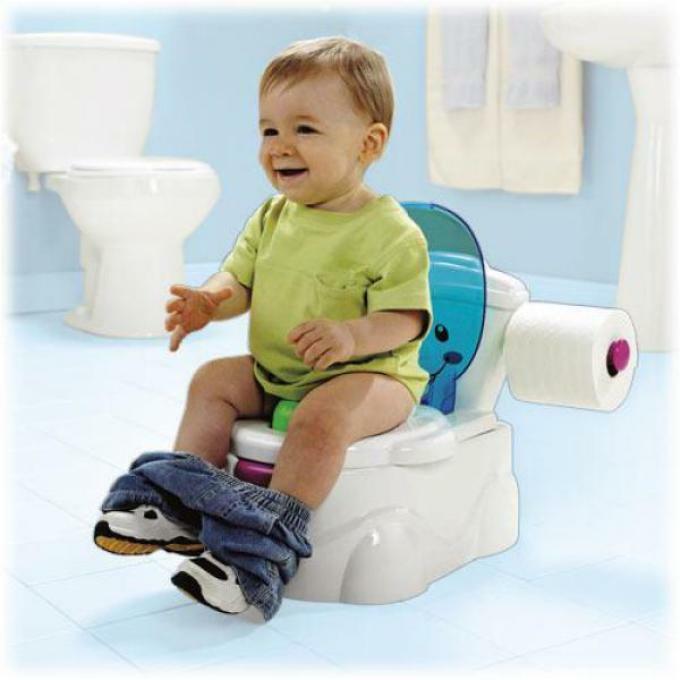
Child's everyday skills in 1.9 years
- eats the food of any consistency
- eats from its plate
- removes and clothes shoes and hat
- sees and reacts if it gets dirty hands or face
- can control its needs and let them know about them to an adult
- to do everything only himself, without help
- knows where his things and toys are stored, other household items
Child development in 1.10 - 2 years
At this age the child is able to:
- overcomes obstacles, stepping over them, alternating legs
- cankeep the balance
- during the game jumps, runs, throws the ball, rolls it off the
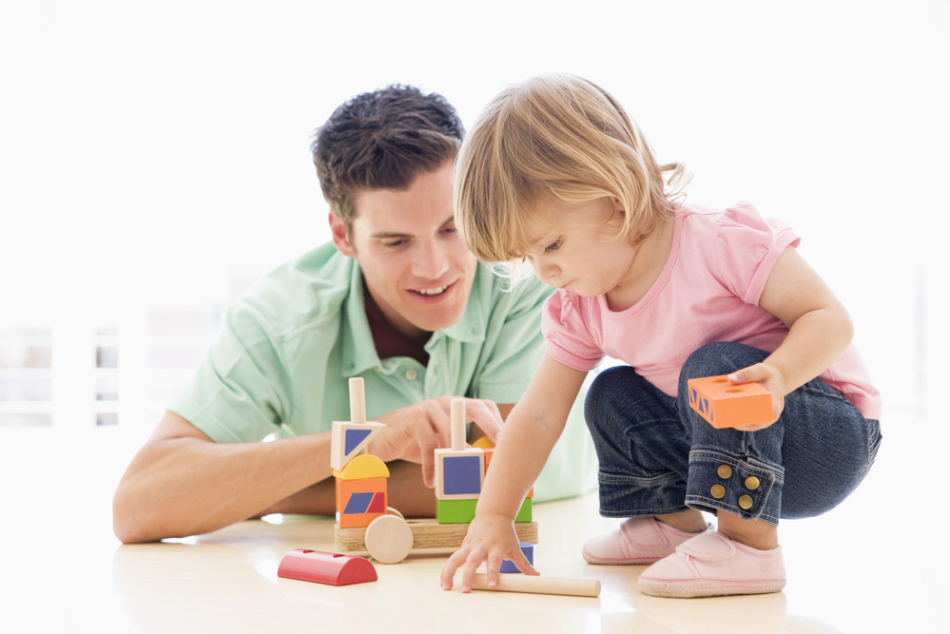
Mountain Table Growth and weight and head circumference of the child in 2 years according to WHO
| Parameters | Child | From | Up |
| Weight, kg | Boy | 9.7 | 15.3 |
| girl | 9 | 14,8 | |
| Height, cm | boy | 81,5 | 94 |
| girl | 80 | 92,5 | |
| Head circumference, cm | boy | 45,5 | 51 |
| girl | 44,5 | 50 |
Cognitive development of the child in 2 years
- Child compares three-dimensional figures with two-dimensional
- Correctly inserts the inserts into holes, different in shape and size.
- Knows three or more values, folds a matryoshka
- Collects a pyramid consisting of five rings
- Knows and names three or four colors, shows and selects the toy of the desired color
- Begins to distinguish between the temperature of objects - cold, hot;weight - light, heavy;texture - hard, soft
- Draws on a sheet, without going beyond its boundaries. Explains what he drew.
- Fishing nettle toys out of the water
- Self in the game does some actions consistently. Choose a story for the game yourself, if you give the material
- Do sequentially two actions with the storyline with your toys, for example, feeds the bunny and puts it to sleep
- Copies the actions of the adult
- Collects cubes from the house, makes fences, paves the path, puts furniture
- Can play with otherschildren with similar toys
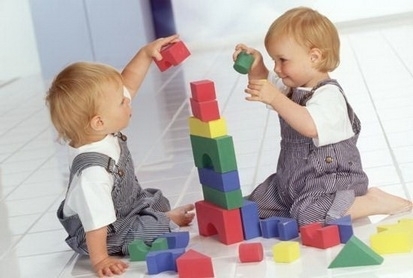
Socially-emotional development of the child in 2 years
- the child behaves actively
- if it turns out or praises the adult, rejoices
- if it does not turn out everything throws anddoes not do
- is harmful, requires its own if something is banned or not given
- is angry and does not listen if an adult rudely talks or restricts movement
- cries a lot when separated from her mother if something is frightened or offended
- is waiting for him to be praised, Looks in the eyes to attract attention, gesticulates, smiles
- if communicating with loved ones, shows everything emotionally
- likes to sound words and syllables
- enjoys listening to music, songs, can both stand still and listen, and vigorously dance
- is very fond of entertainment and games
- when playing with other children, communicates emotionally with them
- if the situation is familiar, reacts to it
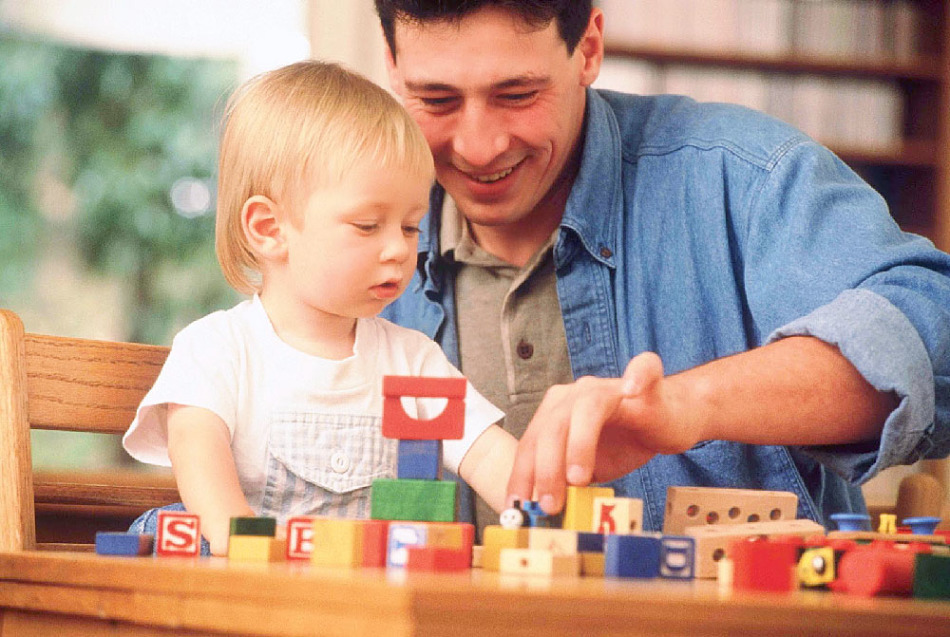
- likes cartoons and children's programs
- is able to sympathize and show it, seeing the example of an adult
- is reverent towards animals,plants
- shows patience for a while if an adult explains why
- collects toys on request, understands what is possible and what can not, what is good and what is bad
Child's everyday skills in 2 years
- can be akkuratabout eating
- tries to wash and wipes himself
- partially dresses himself and undresses
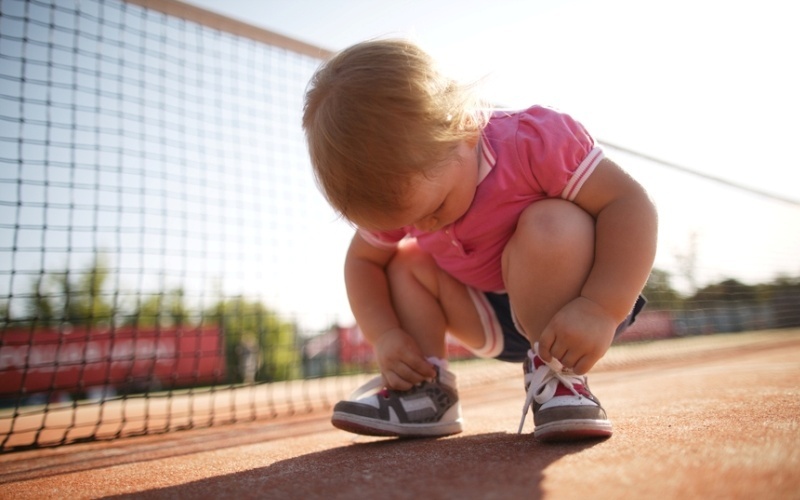
- knows where what lies
- knows how to flaunt himself in a scarf
- controls the needs of his body
Speech development in a child from the year
At one-year-old age, babies usually already say a few wordsor syllables, which they impose meaning. Usually it's mom, dad, baba, on, give and different imitations of sounds, such as wow-hog, meow, pee-pee. Every day the child's vocabulary grows and he increasingly assigns his subjects to actions and actions.
From year to two the child learns to speak, and helps him in this example of adults. Children at this age are little repetitious, trying to reproduce everything they hear, and this is not only the speech of adults, but also different sounds, for example, cars. Many words the child still replaces with gestures, but soon he will learn to speak and them.
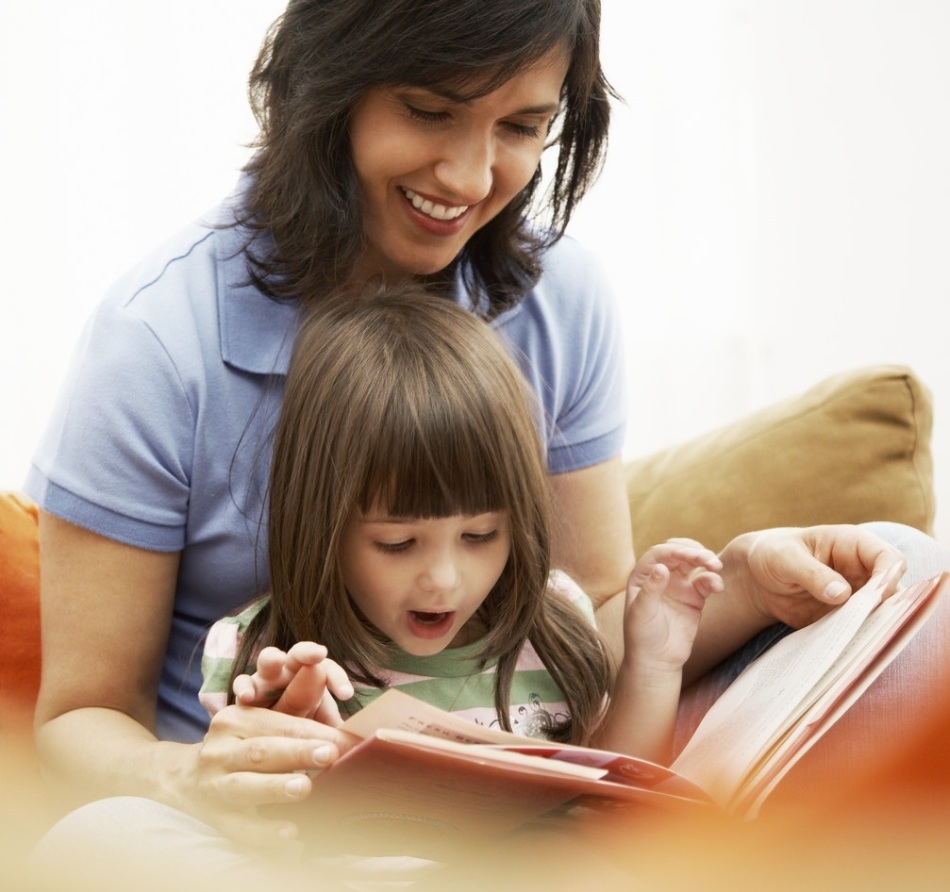
Features of speech development in a child
- In the first years of life, the development of the speech of the child occurs at a rapid pace. Up to a year, children learn to understand and imitate, after a year the active speech of
- is added. The children listen with interest to adults and accumulate a passive vocabulary, i.e.words that they understand. By the end of the second year of life, the child understands the vast majority of words that people say, these are objects and actions, and requests to do something
- . Also at this age the child is able to understand words that are not related to him and act. For example, if the mother says "I can not find the keys," the child can bring them himself if he knows where they are, although his mother did not ask for it. Those.the child, in addition to associating words with objects, he also performs the action independently.
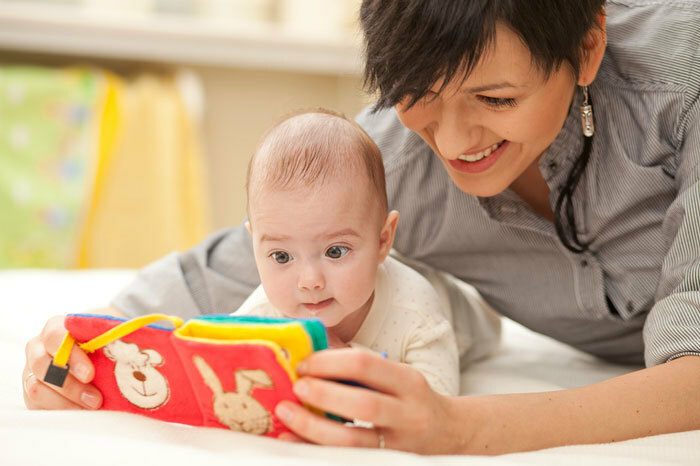 Children of this age are also interested in not only words, but also the accompanying tone. They pay attention to the pace and rhythm of speech, so small children like to listen to a fairy tale in verse, jokes like "forty-crow".
Children of this age are also interested in not only words, but also the accompanying tone. They pay attention to the pace and rhythm of speech, so small children like to listen to a fairy tale in verse, jokes like "forty-crow".
By the end of the second year of life, the main way of communication for the child is speech.
Features of speech development in children from one year to two:
- speech is perceived not only as a means of communication, but also used in the development of various subjects
- is the formation of active speech with which the child contacts the world
- through understanding speech, the child fulfills the requests of an adulti.e.speech performs the regulating function
- the descriptive speech
- is formed using the speech, the child can influence himself and on the adult
- a situational speech arises, the child can describe the situation in which the
- was used with the speech the child tells about his study of the world: he calls words objects, people, actions, feelings, desires, experiences
- child gets social experience, listening to fairy tales, poems, stories

Stages of speech development in children
The development of speech in a child is divided into two stages: passiveactive. Children under one year pass passive stage, after a year also an active speech joins.
Speech development in 1.3 years
Understanding speech:
- knows many toys as they are called, knows many names of surrounding objects, what are the names of adults in the family, some names of their clothes, various actions
- plays in the hands
- if asked, shows the parts of the faceyourself, another adult, toys, in the picture
- does up to two errands, for example, to bring a ball, to find a toy, becausealready knows how to associate words and images
- likes to look at the book, show at the request that
- is drawn when an adult reads a book, poems, sings a song

Active speech:
- speaks up to 20 words or parts of words, so that adults understand what the speech is about
- speaks in its own language
- imitates sounds, for example, meows, barks
Speech development in 1.6 years
Understanding speech:
- if asked, shows different parts of the body
- knows how to generalize toys, despite their color or size, finds what they need on request
- much already understands
- does a lot of household activities, if you ask, for example, bring a broom, put laundry on the laundry, throw it in the garbage
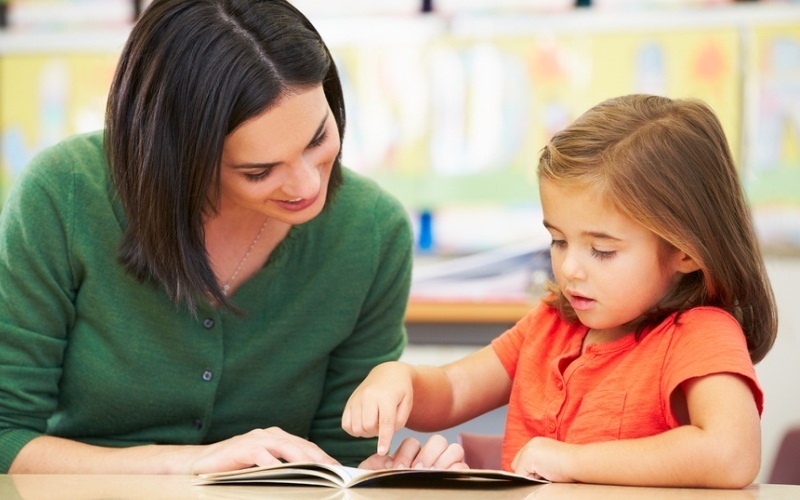
Active speech:
- says up to 40 words or parts of them
- if something interests, asks "who is this?" Or "what is this?"
- tries to say phrases and short sentences
- repeats the words of adults
- adds facial expressions, gestures, looks into the eyes,all these actions are replaced by some kind of word, for example, "give" and shows something
Speech development in 1.9 years
Understanding speech:
- understands a simple painted plot
- says who and what it is, where and what does
- remembers andmakes two requests in sequence, napFind, and bring
- understands a simple familiar story
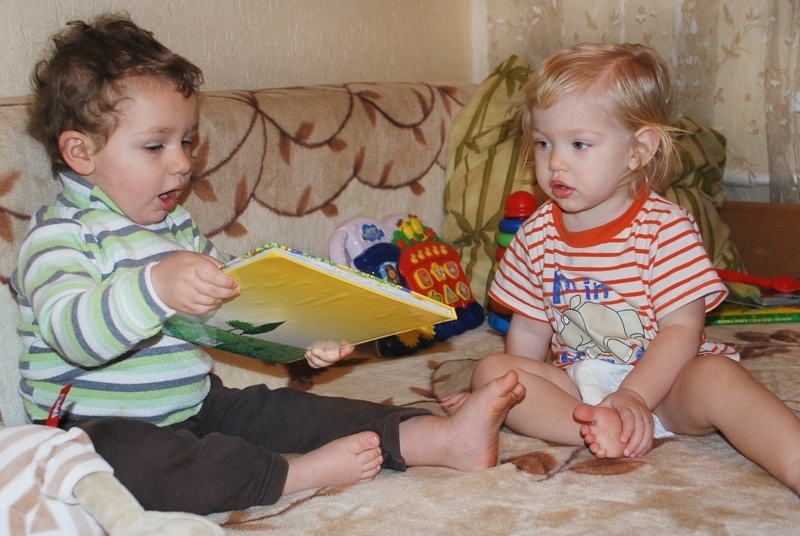
Active speech:
- vocabulary consists of 100 words
- makes short sentences
- stands for any actions, their own or others
- finishes your favorite songs or poems
Speech development in 2 years
Understanding speech:
- understands a small story with a familiar story
- answers questions about what happened when and with whom
- makes three requests consistently
- helps at the request of
- shows and calls all partsbodies and faces
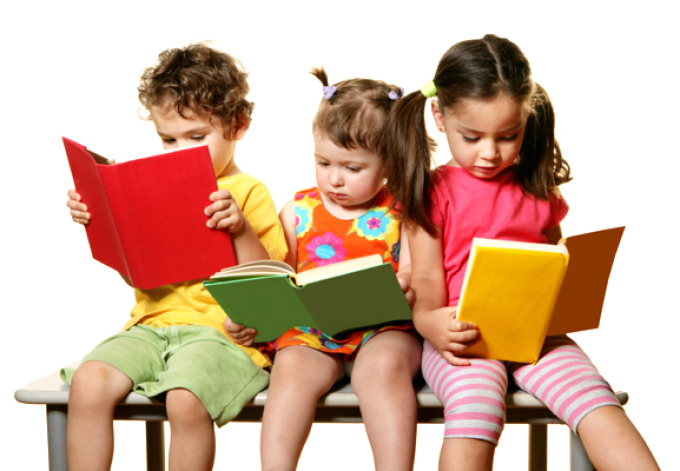
Active speech:
- vocabulary consists of 200-300 words
- makes short sentences when communicating with other children and adults
- starts using other parts of speech except verbs and nouns
- finishes quatrains of favorite fairy tales and poems, sings familiar songs
- can say a few sentences that now sees
- knows how to ask questions, calls that more words are drawn on the
- picture correctly, rather than abbreviated
- evaluates itself - the chorusOsh, beautiful
10 exercises for the development of the speech of the child
In order for a child to show interest in speech, parents need to constantly deal with it. These exercises will help your child to speak quickly.
- Say everything you do, say how objects, actions, toys are called
- Look at pictures in books, talk about characters, look for animals, dishes and other familiar objects on them
- If the kid is interested in something and shows the subject, tell me how it is called
- Sing songs with the child, let them try to sing along
- Learn to imitate the sounds of animals, keep repeating them all the time."Yes, the pussy says meow, and the dog is a wow-hog."
- Considering the pictures, expand the horizon of the child, for example: "In the sky a plane flies, and around it clouds".But speak slowly and let the child take time to understand the said
- It is proved that the fine motor skills and speech are connected, so you need to develop the kid's pens: paint with finger paints, work with plasticine( tear off pieces or knead it with handles), play with frame-liners, laces, letthe child will draw with pencils, let him hold and study figures of different shapes and textures. Games for the pens are very much
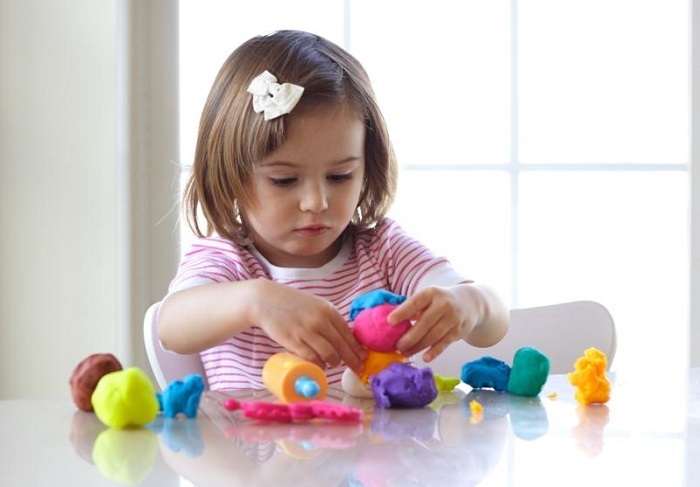
- Train the child's tongue: lick the spoon, oil your lips with something sweet, let it lick, build faces, teach you to clink, smack, dance, spit out the paper, rope
- Teach the kid to blow, give him a whistle, whistle, soapbubbles. Let him try to blow off a feather, a leaf, a grain of
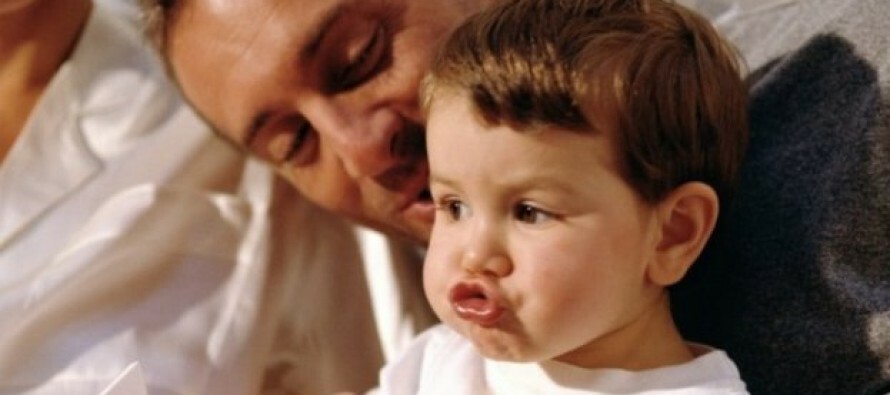
- . Do a massage of the baby's face and his hands, sing a fun song or tell funny rhymes.
